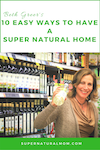Most of us have our own doctor, dentist, and lawyer – so why not a farmer? Many locally owned farms offer fresh, organic fruits and vegetables, eggs from free roaming chickens and beef that has been raised on a green pasture instead of in a crowded, manure-filled feedlot.
According to Michael Pollan, author of the bestseller The Omnivore’s Dilemma, most Americans are only dimly aware that their food represents their most profound engagement with the natural world. “Health problems such as obesity, food poisoning (including mad cow disease), heart disease, and many others are connected to the way we grow our food,” says Pollan.
In generations past most people had a direct connection with the natural world and agriculture where their livelihoods depended on food and other goods produced from the land. As recent as 100 years ago, four-fifths of the world population lived in rural communities and were in some way dependent on agriculture for their living. Even in the 1970’s it is estimated that half of the world’s working population was still employed in agriculture. With industrialization, large numbers of people moved to cities and lost their connection with the land.
Now, most of us go to the market, see the word “Organic” and think the product probably tastes better, has no pesticides or chemical additives, and is therefore a healthier choice for us and our children. But, what’s the environmental impact of the food we buy, even organically grown food? Where did the food come from and how much energy was used to get it to your market? Trucking or flying food in from around the country and the world uses a lot of petroleum. Michael Pollan says that the food industry burns nearly a fifth of all petroleum consumed in the U.S. He calls Wal-Mart, Safeway and Trader Joe’s “Industrial Organic,” where most of its produce comes from a few huge suppliers…even as far away as New Zealand and China. The Washington Post reported that large farms account for only 7 percent of the total number of farms but they produce 60 percent of agricultural output.
So, if you’re health-conscious as well as ecologically minded, you may want to venture out and find your farmer. According to Business Week, the local farmer is emerging as a new celebrity. Why not become part of this important movement? Go to the farmers’ market and talk to the farmers directly. Ask if they use pesticides or synthetic fertilizers. Most are an interesting, committed bunch of people. Or better yet, head directly to a farm near you.
Check out eatwellguide.com, an online directory of sustainably raised meat, poultry, dairy and eggs; eatwild.com, which lists local suppliers for grass-fed meat and dairy products; and heritagefoodsusa.com, which sells mail-order “traceable” products from small farms whose labels provide details about how they were produced.
Another way to connect with a farmer is to join a C.S.A. or “community supported agriculture” farm. The idea for CSAs was originally conceived in the 1920’s by Austrian philosopher Rudolf Steiner. Before the growing season, you buy shares in a farm, and during the season you, the “shareholder,” get a weekly box of fresh, seasonal vegetables, (sometimes eggs and meat), herbs and fruit at the peak of ripeness. They are selected by the farmer and either delivered to your door or collected from a drop-off point.
Pollan says that eating from the C.S.A. box “constitutes the very opposite of industrial eating, that sort of unconscious consumption based on our desire to eat whatever we want whenever we want it — tomatoes in January, strawberries in October — food that’s been cleaned, cut up, processed, cooked, everything but chewed and digested for us.”There are now more than 1500 CSAs in the U.S. To find a C.S.A. near you, go to localharvest.org or csacenter.org.
The challenge is that you have to learn to cook creatively with the rhythms of the seasons and not just with a shopping list. For example, in winter there might only be kale, Swiss chard or collard greens available. And what about that funny looking gnarly brown ball called celeriac? I’ve avoided it for years until I discovered it tastes really great in soup.Remember to eat local, eat seasonal and go “beyond organic.” It definitely takes effort, but the rewards can be tremendous. By actively supporting our dairies, farms and ranches, it will help retain the exceptional quality of life we have here in America.


